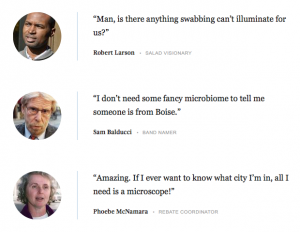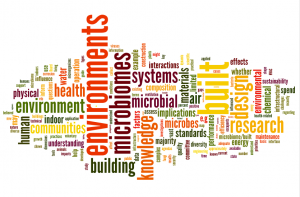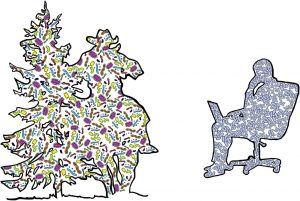Many cultural heritage materials, like statues and scriptures, are lost to microbial degradation. For these important relics of the past to continue to stand the test of time, it is important to be able to effectively test and identify microbes that will harm these materials. This 2016 review from SanmartÃn et al aims to evaluate traditional …
New papers on microbes and the built environment. Microbes and fermenting households Samples collected through the Second Annual San Diego Fermentation Festival: From Sample to Multi-Omics Conclusions in under 48 Hours – Robert A. Quinn – mSystems (OA) (…) Here, we applied a novel integrated omics pipeline for the analysis of human and environmental samples in under …
I have nothing to add to this. The Onion picks up on the recent study by Caporaso and colleagues A study that swabbed office buildings in major cities found that the bacterial profile of the swabs corresponded to their location, suggesting that cities each have their own “bacterial fingerprint.” What do you think? Source: Study: …
Recent papers about microbes and the built environment: Microbes in the house Fungal and Bacterial Communities in Indoor Dust Follow Different Environmental Determinants – Fabian Weikl – PLOS ONE (OA) (…) we wanted to identify key environmental determinants for the house dust microbiome from an existing collection of spatially (area of Munich, Germany) and temporally (301 days) distributed …
On April 11 there was a meeting in Washington DC that was part of an effort from a new study being conducted by the National Academies of Science, Medicine, and Engineering on “Microbiomes of the Built Environment”. Videos and slides from the meeting have now been posted. I have compiled them below. In addition, I …
These will almost certainly be of interest to the MoBE community. There is a new paper in mSystems “Geography and Location Are the Primary Drivers of Office Microbiome Composition” by John Chase, Jennifer Fouquier, Mahnaz Zare, Derek L. Sonderegger, Rob Knight, Scott T. Kelley, Jeffrey Siegel, J. Gregory Caporaso. I found out about the paper via …
New papers on the intersection of human activities and microbes, selected from my daily MicrobiomeDigest blog. Microbes in the house Generation and Characterization of Indoor Fungal Aerosols for Inhalation Studies – Anne Mette Madsen – Applied and Environmental Microbiology (OA) (…) The aim of this study was to develop an inhalation exposure system to be able to examine …
What is better than Open Access?! Citizen Science AND Open Access! The March issue of JMBE was all that. You have probably already heard of Kittybiome and/or The Koala Project, 2 ongoing projects in the Eisen Lab. Both projects were featured in the paper, “Crowdfunding Campaigns Help Researchers Launch Projects and Generate Outreach”, published in …
Your weekly update with new papers on the microbiology of the built environment, and the effect of humans on microbial communities in a broader sense. Microbes in the house Microbial analyses of airborne dust collected from dormitory rooms predict the sex of occupants – Julia C Luongo – Indoor Air ($38 for PDF, $6 to …
Your weekend update: Microbes and drinking water Diversity of ribosomal 16S DNA- and RNA-based bacterial community in an office building drinking water system – Jenni Inkinen – Journal of Applied Microbiology (See also their 2014 Water Research paper about same system) Next-generation sequencing of 16S ribosomal RNA genes (rDNA) and ribosomal RNA (rRNA) was used to characterize …



